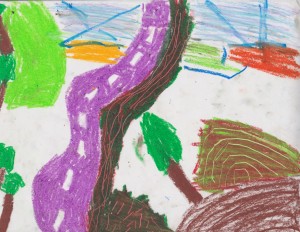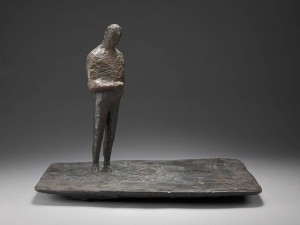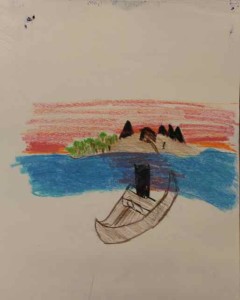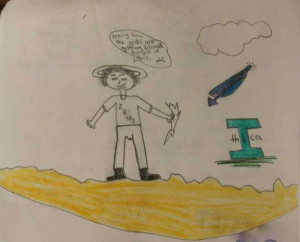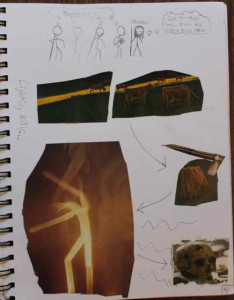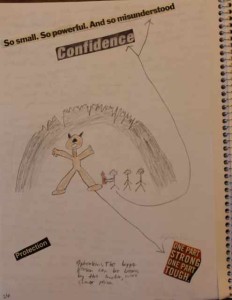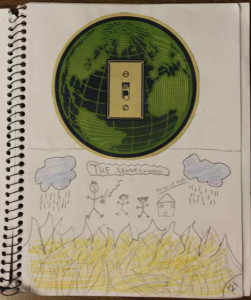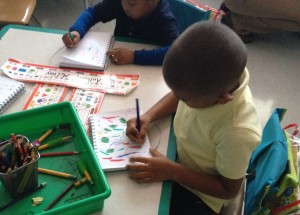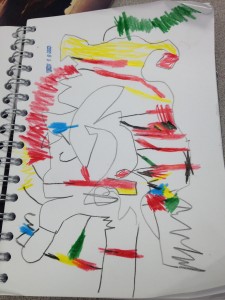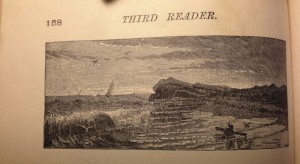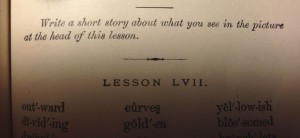By Hallie Cirino, 5’s teacher, CHT Preschool, Westport, CT
One of the great joys of teaching in a school which embraces an emergent curriculum is finding artists whose works reflect the interests of the children. Recently, my co-teacher, Sylvia Grannan, and I noticed an emerging curiosity in jungle animals, so Sylvia said, “Why not study Rousseau?”
We hung colored copies of a small selection of Henri Rousseau’s vibrant paintings on a classroom wall, and waited for the children of our pre-K class to take notice. Our students were immediately drawn in, informally pointing and discussing Rousseau’s work. “Look at those monkeys!” “I like the flowers.” “The moon is full.”
The next day, we set out blank white paper, markers, crayons, pencils, and pastels, and asked the children to “write” what they notice about the paintings. Every one of them first drew what stood out to them, and then wrote a sentence about it. The students each took a turn to share what they had drawn and written.
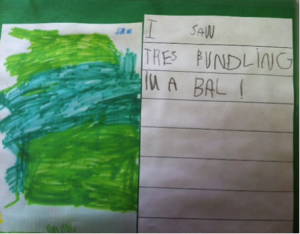

A few days later we revisited their writings, and decided to write a collaborative class poem. The children started the poem by making a list of all the things they noticed in the paintings. We told them that these words are called nouns. The students then added action words to express what the objects/animals were doing in the paintings. Finally, they added descriptive words (adjectives). This was incredibly challenging yet fun for our five-year-olds! Here is their Ode to Rousseau:
Feathered owl resting
Happy monkey swinging
Leafy flower growing
Red plants waving
Tall trees bundling
Round orange sitting
Furry lion sniffing
White moon glowing
Tired girl sleeping
Stringy guitar laying
Serious person standing
Fun city spinning
Along the way, we read parts of a biography about Rousseau, which included the interesting fact that he had never seen a jungle and painted largely from his imagination. At the end of our artist study, we put out paints in the colors of Rousseau’s jungle paintings. The children were invited to use their imaginations, and paint whatever Rousseau had inspired. One of the children wanted to entitle his, and pretty soon they all had titles, from “Beautiful Flowers” to “Hiding Jungle”.

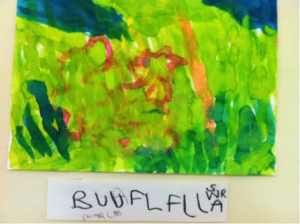
The students of our class are now showing an emerging interest in sharks…



